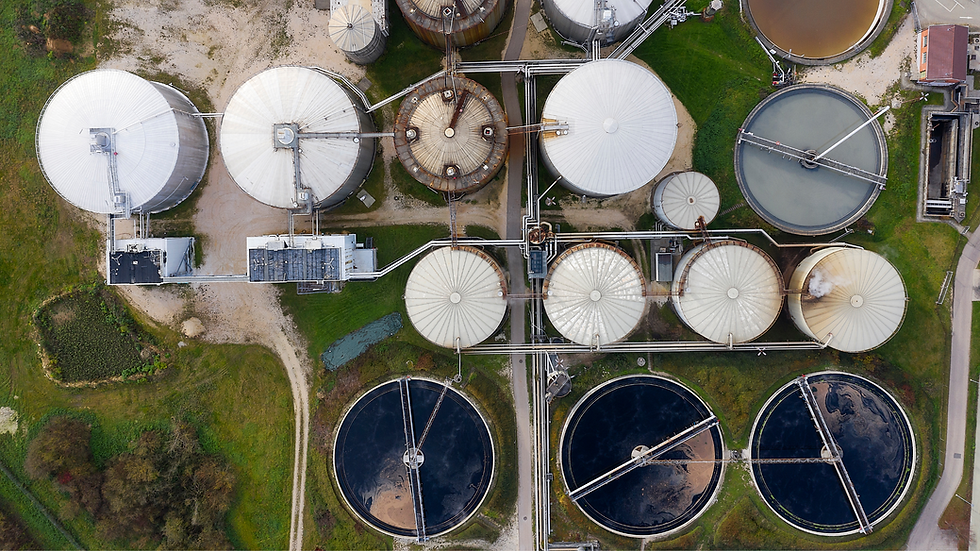Keep Your Water Flowing This Winter
- Ceris Van de Vyver

- Dec 28, 2024
- 4 min read
Updated: Feb 8

Winter brings many joys but also introduces challenges to keeping water flowing smoothly in homes and communities. Frozen pipes, burst mains, and other cold-weather water issues can lead to disruptions, costly repairs, and frustration. But with the right preparations and know-how, you can protect your water supply and avoid unnecessary hassle. Here’s how to stay ahead of winter’s water woes and keep your water flowing this winter.
Common Winter Water Problems
Winter temperatures can wreak havoc on water systems, leading to:
Frozen Pipes:
When water freezes, it expands. This can cause pipes to crack or burst, interrupting water supply and requiring expensive fixes.
Burst Water Mains:
Sudden temperature drops can stress ageing water mains, causing them to fail. These incidents can cause disruption to the wider water supply network, leading to prolonged repair times during cold spells.
Blocked Drains:
An accumulation of leaves and debris can clog surface drains, leading to water backups. Blockages can cause internal and external flooding, which is especially distressing for homeowners, causing stress, inconvenience and can result in costly repairs.
Overloaded Sewers:
Sewers can become overloaded when they are unable to handle the volume of water they receive such as when it rains heavily for a long period of time, which can lead to flooding. As the population grows, more green spaces are paved over, which reduces the amount of natural drainage available and more water enters the old and ageing sewers.
Understanding these risks is the first step toward prevention.
SLIDE into Water this Winter!
Preparation is key to avoiding water-related headaches. So use the acronym SLIDE as a handy guide to help you prepare and avoid those wintery water woes.
Here’s what you can do:
STOP TAP
LAG every exposed pipe and use insulation foam from a DIY store. Lag your pipes before temperatures start dropping.
Insulating jackets are essential to protect water tanks, cisterns and boilers.
Dripping taps must be fixed,
Expert–Get contact details of a reputable registered plumber.
1. Stop Tap
Always know the location of your stop tap – it's important so you are able to turn your water off if needed in an emergency such as a burst pipe. The stop tap is usually located under the kitchen sink.
2. Lag Pipes:
Wrap exposed pipes in insulation foam from a DIY store.
Lag your pipes before temperatures start dropping.
Use pre-slit pipe insulation for easy application on straight pipes.
Pay special attention to pipes located in unheated spaces.
3. Insulate water tanks:
Use Insulating jackets to protect water tanks, cisterns and boilers.
Insulating tanks can help save money on energy bills and prevent freezing.
4. Fix Dripping Taps:
Fixing dripping taps saves you money and prevents issues.
Constant dripping water can damage surrounding floorboards and cabinets, causing them to rot.
Pooled water can lead to the growth of harmful mould, which can cause health issues like respiratory illnesses and allergic reactions.
5. Find an Expert:
Plumbing is a specialist job, therefore we recommend choosing a WaterSafe-approved plumber.
To find an approved plumber in your area, enter your postcode in the search bar.
These simple actions can save you from major disruptions.
How Technology Can Help
Advancements in technology make it easier to monitor and protect your water system.
Consider these tools:
Smart Water Meters:
These devices can alert you to unusual water usage, helping detect leaks or freezing risks.
Some models include temperature sensors that provide real-time updates.
Remote Monitoring Systems:
Apps connected to smart devices allow you to keep tabs on your plumbing even when you’re not at home.
Some systems offer automated shut-off features in case of a burst pipe.
These devices may contribute to lower house insurance premiums
What to Do in Case of Emergencies
Even with precautions, emergencies can happen. Be prepared by:
Knowing the location of your stop tap:
Locate and learn how to operate your stop tap to stop the water flow quickly in the case of a burst pipe.
Calling for Help:
Have the contact information for a trusted plumber readily available.
Don’t delay repairs; acting quickly can minimise damage and prevent costs from escalating.
Quick action can minimise damage, at least cost and restore your water supply faster.
Sustainable Practices for Winter Water Management
You can protect your water supply while being mindful of the environment. Try these tips:
Fix Leaks Promptly:
Address small leaks to prevent waste and bigger problems later.
Monitor your water usage to identify inconsistencies that may indicate hidden leaks.
Check your toilet for leaks - it may be a silent leak and could be lots of wasted water along with a big unwanted bill!
Collect Rainwater:
Use water butts to collect rainwater for non-potable uses, like gardening, even in winter.
Ensure water butts are equipped with lids to prevent debris accumulating on the surface.
Reduce Hot Water Use:
Save energy and water by insulating your water heater and using warm, not hot, water whenever possible.
Lower the water heater’s thermostat slightly to conserve energy without sacrificing comfort.
These steps can save resources and lower your bills.
Conclusion
SLIDE into Winter with some planning and the right tools. Keep your water flowing this winter by knowing your system, insulating pipes, embracing smart technology, and preparing for emergencies.
Safeguard your water system this winter minimising water woes!




Comments